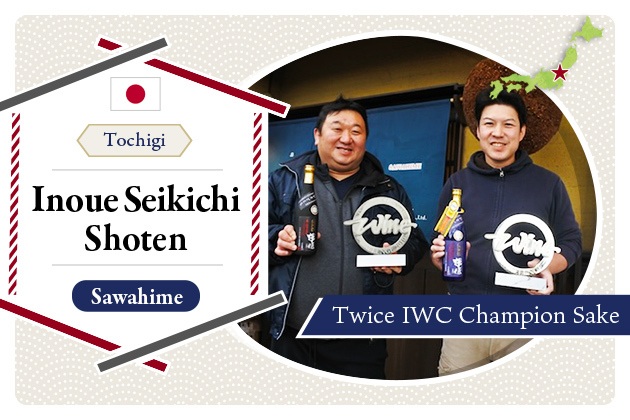
2024.03
27
Does sake have a best-by date? How to store it, clues to tell if it’s good, and what to do with sake no longer drinkable
Many sake labels typically omit "best by" dates. In this article, we explore the shelf life of sake and methods to assess its quality over time. We delve into indicators of sake quality, optimal storage practices, and creative ways to repurpose sake that may no longer be suitable for consumption.
Sake has no best-by date. How does quality change over time?
While it's often claimed that "sake has no best-by date," its quality does change over time. Surprisingly, this change isn't always negative; in fact, there are instances where the quality actually improves. Let's examine the fluctuations in sake quality as it matures.
Why does sake have no best-by date?
According to Japan’s Ministry of Agriculture, Forestry and Fisheries, a “best-by date” is the date up to when things can be “consumed without any changes in quality,” when unopened and stored properly. Not all food items are required to display a best-by date; for instance, products like sake and ice cream tend to experience minimal quality degradation, making it unnecessary for them to include such dates.
In Japan, not only sake, but all liquors including wine, whiskey, and shochu, are not legally required to label best-by dates. This is due to the disinfecting effect of alcohol, which enables long-term storage. There is a date required to be on all sake labels, which indicates the “date of production”, but that indicates when the sake is bottled.
Sake doesn’t go bad – it changes flavor
When unopened, sake does not spoil, but the flavors and aromas can change over time.
Some brewers that feel freshness of flavor and aroma important define their own best-by dates. If that is the case, it’s best to follow those instructions on the bottle. However, some sake improves by maturing in the bottle. Maturation can round out the sharpness in sake or create layers of flavor and complexity. When it comes to sake, quality change does not equal deterioration. Many sake breweries produce matured sake designed to age 10 or 15 years where the color and flavors of the sake will change greatly over that time, and for the better. There are specialized retailers that deal with aged and matured sake.
Indicators for change in sake quality
Changes in sake quality can be detected by smell and color. Maturing sake, after a period of time, will express aromas of nuts, soy sauce, and miso. If you detect these aromas, it doesn’t mean necessarily mean the sake is “off”, as these are positive characteristics in some aged sake.
However, we must be careful if the smell is acidic like tsukemono (Japanese pickles), butter or oxidized oil. These are signs that the sake might not be drinkable, and even if drinkable, it may require creative ways to balance the unintended flavors by pairing it with a particular dish or changing the temperature of the sake. Sake gains hues of yellow as storage period gets longer, and becomes amber to brown in color. It does not mean, nevertheless, that the color change indicates deterioration. Although it depends on one’s preference, there are many brown-hued sake that can be savored.
Guide for storing different types of sake
Sake may not have best-by dates, but we can follow some guidelines to keep our sake in optimum condition. The one date we can use to help determine our storage timeline is the“date of production.” This is the starting point for which we can apply the following guidelines. Let’s look at some guide to storing sake by category according to one of sake certification programs, WSET’s textbook.
Nama (unpasteurized sake): 2-3 months in refrigeration
Many nama sake starts to lose freshness after 2-3 months when unopened. If you want to enjoy nama-specific flavors, drink before 6 months old. Although there is no optimal storage time after opening the bottle, roughly 1 week should be your guide.
Hiire (pasteurized): 10 months
Most sake that is shipped is hiire (pasteurized), and its storage period is 10 months unopened. After opening, ginjo-style bottles can keep for 1 week, and others for 2 weeks with the quality intact.
There are cases, however, like aged sake described below, that can be stored for longer periods.
Aged: Forever
There is no approximate storage period for aged sake that is matured over 1 year. If you learn to judge the changes in flavors over time by tasting various aged sake, you may be able to mature your own sake to your liking.
Reference: Wine & Spirit Education Trust, ed. "Understanding sake: Explaining style and quality - An accompaniment to WSET(R) Level3 Award in Sake" (2016)
How to store sake
Quality of sake transforms with the effect of temperature and sunlight (ultraviolet ray). There are 4 points of consideration in storing sake without deterioration.
No sunlight
The most influential factor in deterioration of sake is sunlight. Sake that has been exposed to sunlight develops what is called “sunshine smell.” Sunshine smell is an unpleasant, burnt smell, and indicates deterioration. Even minimal exposure to sunlight can affect the quality of sake significantly. Florescent light can lend the same effect. It is advised that the bottles be kept in a cool, dark place or wrapped with newspaper to shield them from light.
Always refrigerate nama – ideally at a temperature below 5℃ (41℉)
Nama sake is unpasteurized, which means enzymes contained in the sake are alive. It is in a delicate state subject to changes in aroma and flavor due to temperature, and needs to be refrigerated even when unopened. When wrapped with newspaper and placed in the fridge, it mitigates the temperature change caused by opening and closing the door, which allows for more effective maintenance of quality.
Refrigerate hiire if ginjo, nigori, and lower alcohol sake
Even pasteurized, ginjo-style sake, nigori, and sake with lower alcohol content (below 14%) are prone to changes in aroma and quality. These should be kept in refrigerated storage.
Store upright
Wine bottles are supposed to be kept on their side to keep the cork from drying. However, it is not advisable to apply the same rule to sake bottles. If stored on their side, more surface area of the sake is exposed to oxygen, leading to greater oxidation. It is, however, better to store bottles on their side in the fridge than upright in room temperature.
Three methods for repurposing sake no long suitable for consumption
If you find your sake has changed its quality and is not as drinkable, do not throw it away! Sake can be enjoyed in a variety of ways Here are some ways to repurpose sake we don’t want to drink:
Change temperature
When you feel that sake is not tasty, it may not be at the right temperature. If you sense that the sake has an unusual taste or you would like to taste the flavor more clearly, try heating it up.
Make sake cocktails
Simply mixing sake with liqueur or soda water can result in sake cocktails. The easiest is sake tonic, mixing 9-part sake with 1-part tonic water. Tonic water’s bubbles, fresh aroma, and hint of sweetness elegantly revitalize sake that has become unpleasant.
Use for cooking
If trying to adjust the flavor using temperature or mixers didn’t work, use that sake as luxurious cooking sake instead of white wine. Umami-driven, junmai-style sake is more suited for use as cooking sake. Store-bought cooking sake contains salt, so depending on the recipe, you may want to adjust the amount of salt in your cooking. However, if your sake has become cloudy from clear, then it may have been contaminated with hiochi-kin or sake spoilage lactic acid bacteria that is resistant to alcohol and may now be very acidic. If this is the case, the changes in flavor make it unsuitable for cooking sake.
Summary
There is no best-by date for sake. But it is still useful to know how and how long to store sake so you could enjoy it as long as possible. Sake does not necessarily deteriorate if stored properly, and it possibly improves over time. Armed with this knowledge, you can now practice some of our suggestions!
Pickup Articles
2019.01.18
2019.01.25
Trending Articles
Popular Articles
Recent Articles













